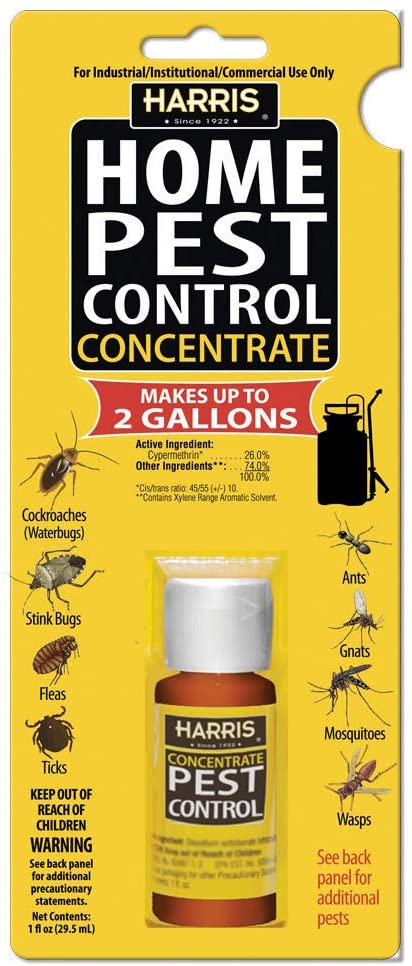A1 Pest Control Charlotte NC Bed Bugs - Specialist Extermination Services
A1 Pest Control Charlotte NC Bed Bugs - Specialist Extermination Services
Blog Article
Bed Bug Therapy Break Down: Comparing Chemical Vs. Non-Chemical Solutions
In the world of bug control, particularly when managing the consistent problem of bed pests, the choice between chemical and non-chemical therapy remedies can be a critical one. Both approaches provide unique benefits and downsides, influencing factors such as efficiency, security considerations, and overall price. By checking out the nuanced details of each method, a clearer understanding of which path to seek in resolving a bed bug infestation can be obtained.
Effectiveness of Chemical Therapies
Chemical treatments for bed bug problems have actually been extensively recognized for their fast and powerful efficacy in eliminating these pests. When thinking about the effectiveness of chemical therapies, it is crucial to understand that they can offer a fast and comprehensive remedy to a bed bug issue. Specialist pest control experts usually rely on pesticides to target bed bugs at numerous phases of their life cycle, including nymphs, eggs, and grownups. These chemicals commonly function by interfering with the bed bugs' anxious system, causing paralysis and ultimate fatality.
Moreover, chemical treatments have the advantage of supplying recurring impacts, implying that they can continue to remove bed insects even after the initial application. This recurring action is particularly beneficial in combating any kind of possible re-infestations. In addition, the fast action of chemical therapies can bring alleviation to individuals dealing with serious bed bug problems, allowing them to regain control of their living rooms quickly.
Safety And Security Worry About Chemical Solutions
One essential element that needs cautious factor to consider when utilizing chemical solutions for bed bug treatment is guaranteeing the safety and security of owners and the setting. Direct exposure to particular chemicals used in bed pest therapies can lead to respiratory system problems, skin irritability, or other negative reactions, particularly in people with pre-existing conditions or sensitivities.
Furthermore, the environmental effect of chemical options is an additional considerable consideration. Some pesticides utilized in bed insect treatments may be damaging to helpful pests, wild animals, and ecosystems if they seep right into the soil or water systems. It is important to use chemical therapies deliberately, complying with security guidelines, and considering much less harmful alternatives to minimize these dangers and ensure the safe and effective management of bed bug invasions.
Benefits of Non-Chemical Strategies
Thinking about the potential safety and security problems and ecological effect associated with chemical remedies for bed insect treatment, checking out non-chemical approaches offers an appealing alternative with a number of distinct advantages. Non-chemical techniques offer a more secure option for houses, particularly those with children, pet dogs, or individuals conscious harsh chemicals. These strategies get rid of the threats of exposure to hazardous substances, minimizing the potential for negative health impacts. In addition, non-chemical treatments are eco friendly, as they do not contribute to air or water air pollution, making them a sustainable option for parasite control.
Additionally, non-chemical remedies can be reliable in targeting bed insects, consisting of hard-to-reach locations where chemical therapies might not permeate - A1 pest control services charlotte. Approaches such as warm therapy, vacuuming, steam cleaning, and bed mattress coverings provide extensive obliteration without the usage of dangerous chemicals.
Limitations of Non-Chemical Treatments

Furthermore, non-chemical treatments usually need numerous applications to accomplish effective removal. This can be lengthy and might not constantly assure pestline full removal of all bed bugs and their eggs, specifically in concealed or hard-to-reach places.
Furthermore, the success of non-chemical therapies heavily relies upon appropriate execution and thoroughness, which can be testing for people without expert knowledge. Insufficient application of non-chemical methods might lead to insufficient removal, bring about consistent problems and the need for additional treatments.
As a result, while non-chemical therapies have their advantages, it is necessary to acknowledge these limitations and consider them when figuring out one of the most efficient approach for managing bed bug invasions.
Cost Contrast: Chemical Vs. Non-Chemical Options
Provided the restrictions related to non-chemical treatments, a necessary facet to assess in the context of bed insect monitoring is the price contrast in between chemical and non-chemical options. Chemical treatments typically include the application of insecticides by experts, which can range from $250 to $900 per area, depending upon the extent of the problem and the dimension of the location to be treated. In contrast, non-chemical treatments like heat therapy or vapor can be extra costly, with prices ranging from $1,000 to $6,000 for an entire home. While the initial cost of chemical treatments may seem reduced, multiple treatments might be required to completely remove the invasion, potentially raising the general cost. On the other hand, non-chemical alternatives may provide an extra environmentally friendly and sustainable service, although they can be cost-prohibitive for some people. Eventually, when thinking about the expense of bed bug therapy alternatives, it is very important to evaluate the upfront expenses versus the efficiency and long-term sustainability of the chosen technique.
Conclusion

Taking into consideration the possible safety i thought about this and security worries and environmental impact linked with chemical services for bed bug therapy, discovering non-chemical strategies presents an appealing choice with several distinct benefits.Given the constraints linked with non-chemical treatments, a vital element to assess in the context of bed insect administration is the cost contrast in between chemical and non-chemical options. In comparison, non-chemical therapies like warmth therapy or steam can be a lot more pricey, with costs varying from $1,000 to $6,000 for an entire home. While the initial expense of chemical therapies might seem lower, numerous treatments may be needed to fully remove the infestation, check this site out potentially raising the overall expense.In conclusion, when comparing chemical and non-chemical bed insect therapy choices, it is crucial to take into consideration performance, safety and security, benefits, constraints, and cost.
Report this page